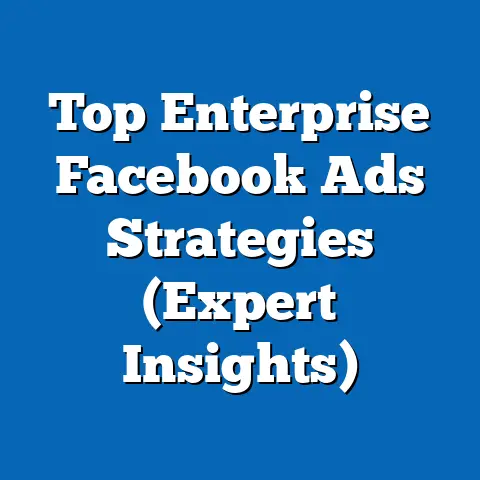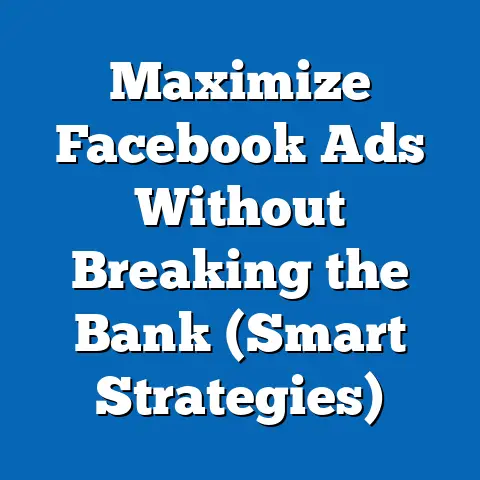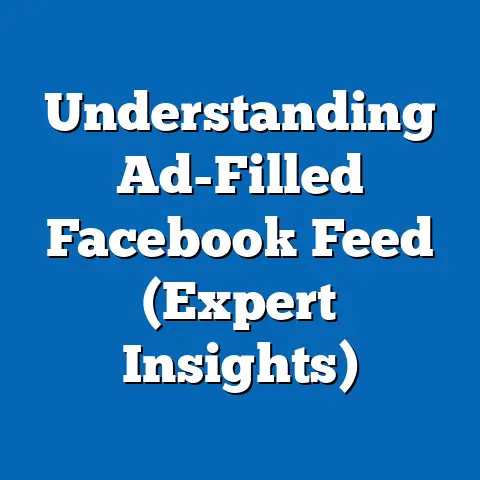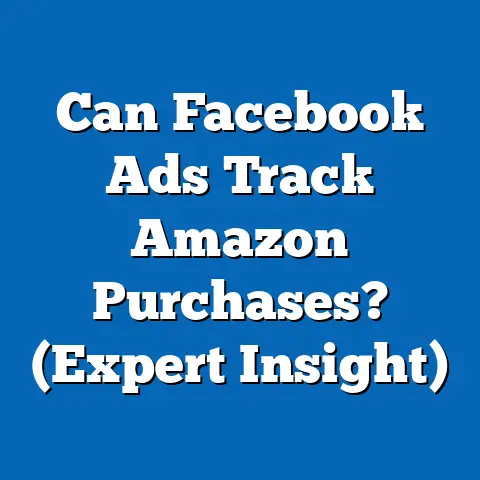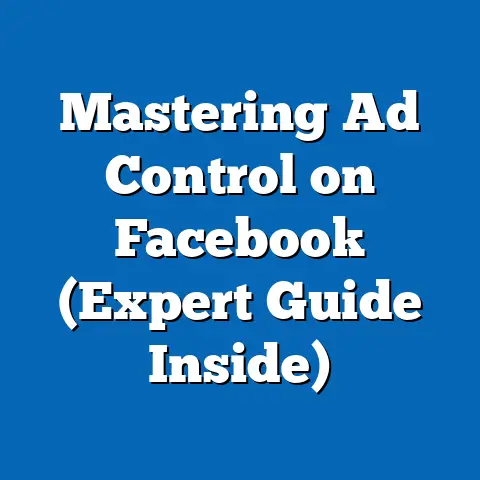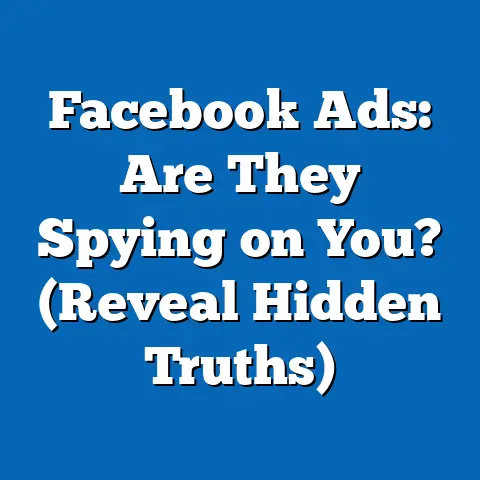Boost Facebook Feed Ads for Maximum Impact (Pro Tips)
Boost Facebook Feed Ads for Maximum Impact (Pro Tips)
Have you ever imagined what it would be like to watch your Facebook Feed Ads skyrocket in performance, reaching millions while converting viewers into loyal customers? That’s the dream, right? It’s achievable, but it takes more than just throwing money at the platform. It requires a strategic approach, a deep understanding of your audience, and a willingness to constantly test and optimize.
Introduction
Facebook, or Meta as it’s now known, remains a powerhouse in the digital advertising landscape. With billions of active users, it offers unparalleled reach and targeting capabilities for businesses of all sizes. Whether you’re a startup looking to build brand awareness or a large corporation aiming to drive sales, Facebook advertising provides the tools to connect with your ideal customers.
Facebook Feed Ads are a crucial component of any successful digital marketing strategy. These ads appear directly in users’ news feeds, seamlessly integrating with the content they’re already consuming. This placement offers a unique opportunity to capture attention and engage with potential customers in a natural and non-intrusive way. Think of it as a conversation starter rather than a blatant sales pitch.
Get ready to transform your Facebook advertising efforts and unlock the full potential of Feed Ads. Let’s get started!
Section 1: Understanding Facebook Feed Ads
Let’s start with the basics. Before you can effectively boost your Facebook Feed Ads, you need a solid understanding of what they are, where they appear, and how they work within the Facebook ecosystem.
Defining Facebook Feed Ads
Facebook Feed Ads are advertisements that appear directly in users’ news feeds, alongside posts from friends, family, and followed pages. They are designed to blend seamlessly into the user’s experience, making them less disruptive and more engaging than traditional display ads.
These ads can take various forms, including:
- Image Ads: Single image ads that showcase a product, service, or brand message.
- Video Ads: Short videos that capture attention and convey a story or demonstration.
- Carousel Ads: Multiple images or videos that users can swipe through, ideal for showcasing a range of products or features.
- Collection Ads: A visually immersive ad format that allows users to browse and purchase products directly from the ad.
- Instant Experience Ads: Full-screen, mobile-optimized experiences that load instantly, providing a more engaging and interactive ad format.
From my experience, video and carousel ads tend to perform well because they offer more opportunities to capture attention and tell a story. However, the best ad format for you will depend on your specific goals, target audience, and creative assets.
Placement within the Facebook Ecosystem
Facebook Feed Ads appear in the news feeds of users on both desktop and mobile devices. This placement is highly valuable because it allows you to reach users where they are already spending their time and attention.
The exact placement of your ad within the feed can vary depending on factors such as user behavior, ad relevance, and bidding strategy. However, Facebook’s algorithm is designed to show ads to users who are most likely to be interested in them, increasing the chances of engagement and conversion.
I’ve found that testing different ad placements can significantly impact performance. While Feed Ads are generally effective, experimenting with other placements, such as the right column or Instagram Feed, can help you optimize your overall advertising strategy.
Unique Characteristics of Facebook Feed Ads
Facebook Feed Ads have several unique characteristics that make them a powerful advertising tool:
- Targeting Options: Facebook offers incredibly granular targeting options, allowing you to reach specific demographics, interests, behaviors, and even custom audiences based on your existing customer data.
- Audience Engagement: Feed Ads are designed to encourage engagement, with features like likes, comments, shares, and click-throughs. This engagement can help you build brand awareness and foster relationships with potential customers.
- Analytics Metrics: Facebook provides detailed analytics metrics that allow you to track the performance of your Feed Ads and make data-driven adjustments to your campaigns.
- Native Integration: Because Feed Ads blend seamlessly into the user’s news feed, they often feel less intrusive than traditional ads. This native integration can lead to higher engagement rates and a more positive brand perception.
Understanding Facebook’s Algorithm
Facebook’s algorithm plays a significant role in determining which ads are shown to which users. The algorithm takes into account a variety of factors, including:
- Ad Relevance: How relevant the ad is to the user’s interests and behaviors.
- Ad Quality: The quality of the ad’s creative elements, such as images, videos, and copy.
- Bidding Strategy: The amount you’re willing to pay to show your ad to a particular user.
- User Feedback: How users have interacted with similar ads in the past.
To maximize the visibility and performance of your Feed Ads, it’s essential to create high-quality, relevant content that resonates with your target audience. You should also carefully consider your bidding strategy and monitor your ad performance to make data-driven adjustments.
Key Takeaways:
- Facebook Feed Ads are a powerful advertising tool that can reach billions of users.
- Understanding the different ad formats and their unique characteristics is crucial for success.
- Facebook’s algorithm plays a significant role in determining ad visibility and performance.
Next Steps:
- Familiarize yourself with the different Facebook Feed Ad formats.
- Research your target audience to understand their interests and behaviors.
- Begin experimenting with different ad placements to optimize performance.
Section 2: Crafting Compelling Ad Content
Now that you understand the fundamentals of Facebook Feed Ads, let’s talk about how to create compelling content that grabs attention and drives results.
The Power of Storytelling
Storytelling is a powerful tool for connecting with your audience on an emotional level. When you tell a story, you’re not just selling a product or service; you’re creating a connection that resonates with people’s values, aspirations, and experiences.
In your Facebook Feed Ads, try to tell a story that highlights the benefits of your product or service in a relatable and engaging way. For example, instead of simply listing the features of your product, tell a story about how it has helped someone solve a problem or achieve a goal.
I once worked with a small business that sold organic skincare products. Instead of just showing pictures of their products, we created a video ad that told the story of a woman who had struggled with acne for years and how their products had transformed her skin. The ad was incredibly effective because it resonated with viewers who had similar experiences and showed them that the products could offer a real solution.
Writing Persuasive Ad Copy
Your ad copy is your opportunity to grab attention, convey your message, and encourage action. Here are some tips for writing persuasive ad copy:
- Start with a Hook: Grab attention with a compelling headline or opening sentence.
- Highlight Benefits: Focus on the benefits of your product or service, not just the features.
- Use Strong Verbs: Use action verbs that create a sense of urgency and excitement.
- Keep it Concise: Get straight to the point and avoid unnecessary jargon.
- Include a Clear Call to Action: Tell people exactly what you want them to do (e.g., “Shop Now,” “Learn More,” “Sign Up”).
I always recommend testing different ad copy variations to see what resonates best with your audience. Experiment with different headlines, body text, and calls to action to optimize your ad performance.
High-Quality Visuals and Branding Consistency
Visuals play a crucial role in capturing attention and conveying your brand message. Use high-quality images and videos that are visually appealing and relevant to your target audience.
Make sure your visuals are consistent with your brand identity. Use your brand colors, fonts, and logo to create a cohesive and recognizable look. This consistency will help you build brand awareness and establish a strong brand presence on Facebook.
I’ve seen firsthand how consistent branding can improve ad performance. When your ads look and feel like your brand, people are more likely to recognize and trust them.
A/B Testing for Optimization
A/B testing, also known as split testing, is the process of comparing two versions of an ad to see which one performs better. This is a powerful technique for optimizing your ad content and creative elements.
You can A/B test a variety of elements, including:
- Headlines: Test different headlines to see which ones grab the most attention.
- Images: Test different images to see which ones are most visually appealing.
- Videos: Test different videos to see which ones are most engaging.
- Calls to Action: Test different calls to action to see which ones drive the most conversions.
- Targeting: Test different targeting options to see which ones reach the most relevant audience.
I recommend A/B testing one element at a time to accurately measure the impact of each change. Use the data from your A/B tests to make informed decisions about your ad content and creative elements.
Real-World Examples
Let’s look at some real-world examples of successful ad campaigns that utilized strong content strategies:
- Nike: Nike is known for its inspiring and motivational ad campaigns. Their Facebook Feed Ads often feature athletes overcoming challenges and achieving their goals. This storytelling approach resonates with viewers and reinforces Nike’s brand values.
- Dove: Dove’s “Real Beauty” campaign is a great example of using ad content to promote a positive message. Their Facebook Feed Ads feature diverse women of all shapes and sizes, challenging traditional beauty standards and promoting self-acceptance.
- Airbnb: Airbnb’s Facebook Feed Ads often showcase unique and inspiring travel destinations. Their ads feature high-quality photos and videos that capture the essence of these destinations, enticing viewers to book a stay.
Key Takeaways:
- Storytelling is a powerful tool for connecting with your audience.
- Persuasive ad copy should be concise, benefit-driven, and include a clear call to action.
- High-quality visuals and branding consistency are crucial for capturing attention and building brand awareness.
- A/B testing is essential for optimizing your ad content and creative elements.
Next Steps:
- Start brainstorming ideas for telling stories in your Facebook Feed Ads.
- Practice writing persuasive ad copy that highlights the benefits of your product or service.
- Ensure your visuals are high-quality and consistent with your brand identity.
- Begin A/B testing different elements of your ads to optimize performance.
Section 3: Targeting the Right Audience
Crafting compelling ad content is only half the battle. To truly boost your Facebook Feed Ads, you need to target the right audience.
Understanding Facebook’s Targeting Capabilities
Facebook offers a wide range of targeting options that allow you to reach specific demographics, interests, behaviors, and even custom audiences based on your existing customer data.
Here are some of the key targeting options:
- Demographics: Target users based on age, gender, location, education, relationship status, and more.
- Interests: Target users based on their interests, hobbies, and the pages they have liked on Facebook.
- Behaviors: Target users based on their online and offline behaviors, such as purchase history, travel habits, and device usage.
- Custom Audiences: Upload your own customer data (e.g., email addresses, phone numbers) to create custom audiences that you can target with your ads.
- Lookalike Audiences: Create lookalike audiences based on your existing customer data to reach new users who are similar to your best customers.
I’ve found that combining different targeting options can be particularly effective. For example, you could target women aged 25-34 who are interested in fashion and have recently purchased clothing online.
Defining Your Target Audience
Before you start creating ad campaigns, it’s essential to define your target audience. Ask yourself the following questions:
- Who are my ideal customers?
- What are their demographics, interests, and behaviors?
- What problems do they have that my product or service can solve?
- What motivates them to make a purchase?
- Where do they spend their time online?
The more you know about your target audience, the better you’ll be able to craft compelling ad content and target your ads effectively.
I recommend creating detailed buyer personas to help you visualize your target audience. A buyer persona is a fictional representation of your ideal customer, based on research and data about your existing customers.
Using Facebook Insights and Analytics
Facebook Insights and Analytics provide valuable data about your audience, including their demographics, interests, behaviors, and how they interact with your content.
Use this data to refine your audience targeting and optimize your ad campaigns. For example, if you notice that a particular demographic is responding well to your ads, you can focus your targeting on that group.
I regularly use Facebook Insights to monitor the performance of my ads and identify opportunities for improvement. This data-driven approach allows me to make informed decisions about my targeting strategy and maximize my ROI.
Lookalike Audiences
Lookalike audiences are a powerful tool for expanding your reach and finding new customers who are similar to your best customers.
To create a lookalike audience, you need to upload your own customer data to Facebook. Facebook will then analyze this data and identify users who share similar characteristics.
You can create lookalike audiences based on a variety of sources, including:
- Website Visitors: Users who have visited your website.
- Email Subscribers: Users who have subscribed to your email list.
- Customers: Users who have purchased your product or service.
- Page Fans: Users who have liked your Facebook page.
I’ve found that lookalike audiences can be incredibly effective for driving conversions and building brand awareness. By targeting users who are similar to your best customers, you can increase the chances of reaching people who are genuinely interested in your product or service.
Case Studies
Let’s look at some case studies of businesses that successfully targeted niche audiences through Facebook Feed Ads:
- A Local Restaurant: A local restaurant used Facebook Feed Ads to target people who lived within a 5-mile radius and were interested in dining out. They created ads that showcased their menu items and offered special promotions. This targeted approach helped them attract new customers and increase sales.
- An Online Clothing Boutique: An online clothing boutique used Facebook Feed Ads to target women aged 25-34 who were interested in fashion and had recently purchased clothing online. They created ads that featured their latest arrivals and offered free shipping. This targeted approach helped them drive traffic to their website and increase sales.
- A Software Company: A software company used Facebook Feed Ads to target business owners and entrepreneurs who were interested in productivity and efficiency. They created ads that highlighted the benefits of their software and offered a free trial. This targeted approach helped them generate leads and increase sales.
Key Takeaways:
- Facebook offers a wide range of targeting options that allow you to reach specific demographics, interests, and behaviors.
- Defining your target audience is essential for creating compelling ad content and targeting your ads effectively.
- Facebook Insights and Analytics provide valuable data about your audience.
- Lookalike audiences are a powerful tool for expanding your reach and finding new customers.
Next Steps:
- Define your target audience by creating detailed buyer personas.
- Explore Facebook’s targeting options and identify the ones that are most relevant to your business.
- Use Facebook Insights and Analytics to gather data about your audience.
- Create lookalike audiences based on your existing customer data.
Section 4: Budgeting and Bidding Strategies
Now that you know how to create compelling ad content and target the right audience, let’s talk about budgeting and bidding strategies.
Budgeting Options
Facebook offers two main budgeting options:
- Daily Budget: Set a daily budget and Facebook will spend that amount each day.
- Lifetime Budget: Set a lifetime budget and Facebook will spend that amount over the duration of your campaign.
The best budgeting option for you will depend on your specific goals and how long you plan to run your campaign.
I generally recommend using a daily budget for ongoing campaigns and a lifetime budget for short-term campaigns. A daily budget allows you to continuously optimize your campaign based on performance, while a lifetime budget provides more control over your overall spend.
Bidding Strategies
Facebook offers two main bidding strategies:
- Automatic Bidding: Facebook automatically sets your bids to get the most results for your budget.
- Manual Bidding: You manually set your bids for each ad set.
Automatic bidding is a good option for beginners, as it simplifies the bidding process and allows Facebook to optimize your bids based on its own data. However, manual bidding gives you more control over your bids and allows you to target specific users or placements.
I often use manual bidding when I have a specific goal in mind, such as driving conversions or increasing brand awareness. By manually setting my bids, I can ensure that I’m reaching the right audience at the right price.
Pro Tips for Optimizing Ad Spend
Here are some pro tips for optimizing your ad spend and maximizing your ROI:
- Start Small: Start with a small budget and gradually increase it as your campaign performs well.
- Monitor Performance: Regularly monitor your ad performance and make adjustments to your budget and bids as needed.
- Target the Right Audience: Make sure you’re targeting the right audience with your ads.
- Use High-Quality Visuals: Use high-quality images and videos that are visually appealing and relevant to your target audience.
- Write Compelling Ad Copy: Write persuasive ad copy that highlights the benefits of your product or service.
- A/B Test Your Ads: A/B test different elements of your ads to optimize performance.
- Use Retargeting: Retarget users who have previously interacted with your website or ads.
I’ve found that retargeting can be particularly effective for driving conversions. By targeting users who have already shown an interest in your product or service, you can increase the chances of them making a purchase.
Common Pitfalls
Here are some common pitfalls to avoid when budgeting and bidding on Facebook:
- Setting Too Low of a Budget: Setting too low of a budget can limit your reach and prevent you from getting the results you want.
- Setting Too High of a Budget: Setting too high of a budget can lead to wasted ad spend.
- Not Monitoring Performance: Not monitoring your ad performance can prevent you from making necessary adjustments to your budget and bids.
- Not Targeting the Right Audience: Not targeting the right audience can lead to wasted ad spend and poor results.
- Not A/B Testing Your Ads: Not A/B testing your ads can prevent you from optimizing performance.
Key Takeaways:
- Facebook offers two main budgeting options: daily budget and lifetime budget.
- Facebook offers two main bidding strategies: automatic bidding and manual bidding.
- Optimizing your ad spend is crucial for maximizing your ROI.
- Avoid common pitfalls by setting a realistic budget, monitoring performance, and targeting the right audience.
Next Steps:
- Determine your advertising budget based on your business goals and resources.
- Choose the budgeting option and bidding strategy that are most appropriate for your campaign.
- Monitor your ad performance regularly and make adjustments to your budget and bids as needed.
- Avoid common pitfalls by targeting the right audience and A/B testing your ads.
Section 5: Analyzing Performance and Making Adjustments
The final, and arguably most important, step in boosting your Facebook Feed Ads is analyzing performance and making data-driven adjustments.
Monitoring Ad Performance
Facebook Ads Manager is your go-to tool for monitoring the performance of your ads. It provides a wealth of data about your campaigns, ad sets, and individual ads.
Here are some of the key metrics to track:
- Impressions: The number of times your ad was shown.
- Reach: The number of unique people who saw your ad.
- Clicks: The number of times people clicked on your ad.
- Click-Through Rate (CTR): The percentage of people who saw your ad and clicked on it.
- Cost Per Click (CPC): The average cost of each click on your ad.
- Conversions: The number of people who took a desired action after clicking on your ad (e.g., making a purchase, signing up for a newsletter).
- Conversion Rate: The percentage of people who clicked on your ad and took a desired action.
- Cost Per Conversion (CPC): The average cost of each conversion.
- Return on Ad Spend (ROAS): The amount of revenue generated for every dollar spent on advertising.
I recommend creating a custom dashboard in Ads Manager that displays the metrics that are most important to your business. This will allow you to quickly and easily monitor your ad performance and identify areas for improvement.
Interpreting Data
Once you’re tracking your ad performance, you need to interpret the data and make informed adjustments to your campaigns.
Here are some tips for interpreting the data:
- Look for Trends: Identify trends in your data to see what’s working and what’s not.
- Compare Performance: Compare the performance of different campaigns, ad sets, and ads to see which ones are performing best.
- Identify Outliers: Identify outliers in your data to see if there are any unexpected results.
- Consider Context: Consider the context of your data, such as seasonal trends or changes in your target audience.
I often use a spreadsheet to analyze my ad performance data and identify trends. This allows me to visualize the data and make more informed decisions about my campaigns.
Making Adjustments
Based on your analysis of the data, you can make adjustments to your campaigns to improve performance.
Here are some common adjustments:
- Adjust Your Budget: Increase your budget for campaigns that are performing well and decrease your budget for campaigns that are not.
- Adjust Your Bids: Increase your bids for ad sets that are performing well and decrease your bids for ad sets that are not.
- Adjust Your Targeting: Refine your targeting to reach a more relevant audience.
- Adjust Your Ad Creative: Update your ad creative to make it more appealing and engaging.
- Adjust Your Landing Page: Optimize your landing page to improve the conversion rate.
I recommend making small, incremental adjustments to your campaigns and monitoring the results closely. This will allow you to see the impact of each change and optimize your campaigns effectively.
Retargeting Strategies
Retargeting is a powerful strategy for driving conversions and increasing ROI. It involves targeting users who have previously interacted with your website or ads.
Here are some common retargeting strategies:
- Website Retargeting: Target users who have visited your website but haven’t made a purchase.
- Ad Engagement Retargeting: Target users who have engaged with your ads but haven’t visited your website.
- Email Retargeting: Target users who have subscribed to your email list but haven’t made a purchase.
I’ve found that website retargeting can be particularly effective for driving conversions. By targeting users who have already shown an interest in your product or service, you can increase the chances of them making a purchase.
Pivoting Ad Strategies
Sometimes, despite your best efforts, your ad campaigns may not be performing as well as you hoped. In these cases, it’s important to be willing to pivot your ad strategies and try something new.
Here are some signs that it may be time to pivot your ad strategies:
- Low Click-Through Rate (CTR): If your CTR is low, it may indicate that your ad creative is not compelling enough.
- High Cost Per Click (CPC): If your CPC is high, it may indicate that you’re not targeting the right audience or that your bids are too high.
- Low Conversion Rate: If your conversion rate is low, it may indicate that your landing page is not optimized or that your product or service is not a good fit for your target audience.
- Negative Feedback: If you’re receiving negative feedback on your ads, it may indicate that your message is not resonating with your audience.
When pivoting your ad strategies, consider trying the following:
- Target a Different Audience: Experiment with different targeting options to see if you can reach a more responsive audience.
- Update Your Ad Creative: Refresh your ad creative with new images, videos, and copy.
- Offer a Different Promotion: Try offering a different promotion, such as a discount or free shipping.
- Test a Different Landing Page: Test a different landing page to see if you can improve the conversion rate.
Key Takeaways:
- Monitoring ad performance is crucial for identifying areas for improvement.
- Interpreting data allows you to make informed adjustments to your campaigns.
- Retargeting is a powerful strategy for driving conversions and increasing ROI.
- Be willing to pivot your ad strategies if your campaigns are not performing well.
Next Steps:
Let’s recap the key takeaways from each section:
- Understanding Facebook Feed Ads: Facebook Feed Ads are a powerful advertising tool that can reach billions of users. Understanding the different ad formats and their unique characteristics is crucial for success. Facebook’s algorithm plays a significant role in determining ad visibility and performance.
- Crafting Compelling Ad Content: Storytelling is a powerful tool for connecting with your audience. Persuasive ad copy should be concise, benefit-driven, and include a clear call to action. High-quality visuals and branding consistency are crucial for capturing attention and building brand awareness. A/B testing is essential for optimizing your ad content and creative elements.
- Targeting the Right Audience: Facebook offers a wide range of targeting options that allow you to reach specific demographics, interests, and behaviors. Defining your target audience is essential for creating compelling ad content and targeting your ads effectively. Facebook Insights and Analytics provide valuable data about your audience. Lookalike audiences are a powerful tool for expanding your reach and finding new customers.
- Budgeting and Bidding Strategies: Facebook offers two main budgeting options: daily budget and lifetime budget. Facebook offers two main bidding strategies: automatic bidding and manual bidding. Optimizing your ad spend is crucial for maximizing your ROI. Avoid common pitfalls by setting a realistic budget, monitoring performance, and targeting the right audience.
- Analyzing Performance and Making Adjustments: Monitoring ad performance is crucial for identifying areas for improvement. Interpreting data allows you to make informed adjustments to your campaigns. Retargeting is a powerful strategy for driving conversions and increasing ROI. Be willing to pivot your ad strategies if your campaigns are not performing well.
I encourage you to take action and implement the pro tips shared throughout this article. Don’t be afraid to experiment with different strategies and see what works best for your business.
Remember, Facebook advertising is an ongoing process of learning, testing, and optimizing. By continuously monitoring your ad performance and making data-driven adjustments, you can unlock the full potential of Facebook Feed Ads and transform your business marketing efforts.
I’m confident that with the right strategies and a commitment to continuous improvement, you can achieve remarkable results with Facebook Feed Ads. So go out there and make it happen!

